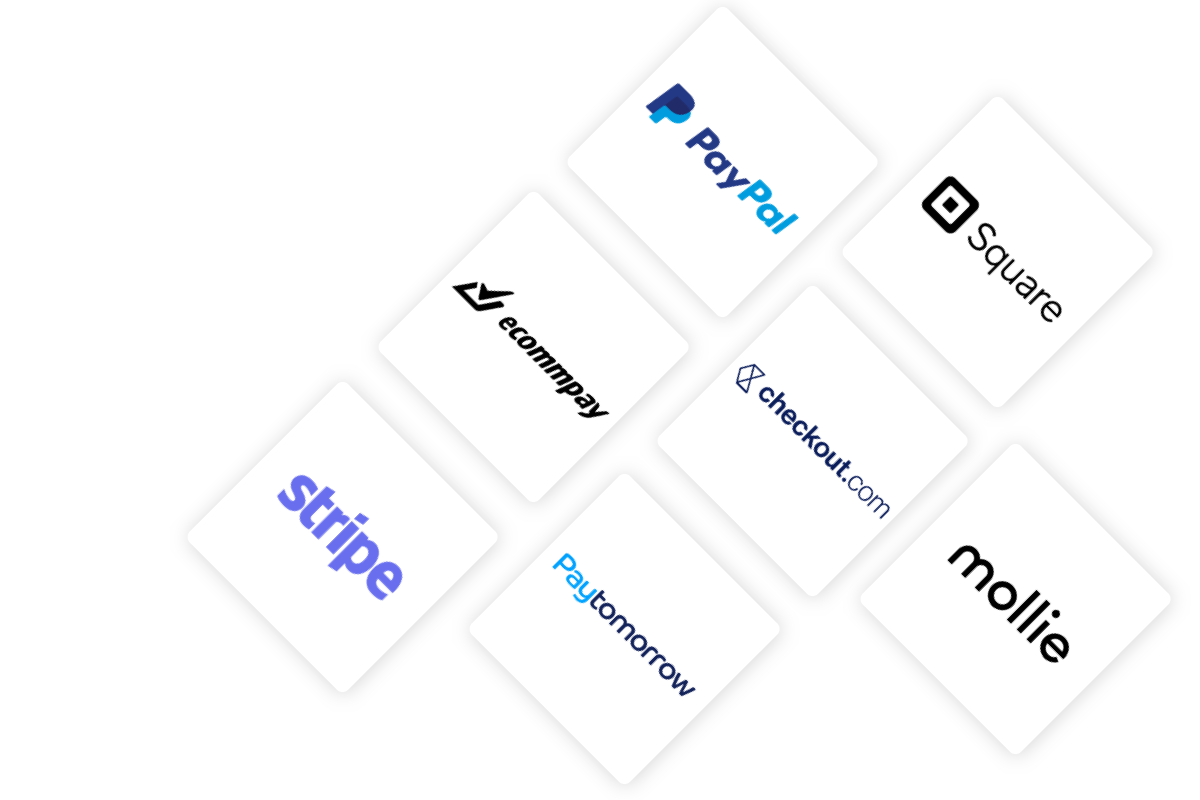Our Payment Links are different
Use your Payment Gateway
Use Multiple Payment Gateways/Methods
Not tied to any product, invoice or amount

Pre-authorize, capture payment or save a card
Payment Links for video shopping
1. Introduction
Video shopping has become increasingly popular over the past few years, with more and more people turning to online platforms to purchase products they need or want. One of the key advantages of video shopping is the ability to showcase products in an engaging and interactive way, allowing customers to get a better understanding of what they’re buying before making a purchase. However, one of the challenges of video shopping is the need for secure and reliable payment methods. In this article, we’ll explore how payment links can be integrated into video shopping platforms to provide a seamless and secure checkout experience for customers.
2. What are payment links?
Payment links are a type of digital payment solution that allows customers to make purchases directly from a video shopping platform. They provide a seamless and secure way for users to complete transactions without leaving the platform. Payment links are typically generated by the video shopping platform and can be customized with branding elements to match the look and feel of the platform. Once a customer clicks on a payment link, they will be directed to a secure payment page where they can enter their payment details and complete the transaction. Payment links are becoming increasingly popular in the world of e-commerce as they offer a convenient and efficient way for customers to make purchases online.
3. Advantages of using payment links in video shopping
Payment links offer several advantages for video shopping platforms. Firstly, they provide a seamless checkout experience for customers, allowing them to complete their purchase without leaving the video. This can lead to higher conversion rates and increased sales. Secondly, payment links allow for customization of the checkout process, including the ability to add additional payment options or modify the payment process to suit specific customer needs. Thirdly, payment links can reduce cart abandonment rates by providing a secure and convenient way for customers to complete their purchase. Finally, payment links can also help to increase customer loyalty by providing a positive checkout experience and making it easy for customers to return to the video shopping platform in the future.
4. How do payment links work in video shopping?
Payment links work in video shopping by allowing customers to purchase products directly from within the video itself. This eliminates the need for customers to leave the video to go to another website or app to complete their purchase. Instead, they can simply click on the payment link and enter their payment information to complete the transaction. This streamlines the purchasing process and makes it more convenient for customers. Additionally, payment links can be customized to include different payment options such as credit card, PayPal, or Apple Pay, giving customers the flexibility to choose how they want to pay.
5. Types of payment links used in video shopping
Types of payment links used in video shopping include:
* Single-use payment links: These links can only be used once and then expire. They are often used for one-time purchases or promotional offers.
* Recurring payment links: These links allow customers to set up recurring payments for subscriptions or memberships.
* Virtual terminal payment links: These links allow merchants to process payments directly through their own website, rather than relying on a third-party payment processor.
* Mobile payment links: These links are optimized for mobile devices and provide a seamless checkout experience for customers shopping on their smartphones or tablets.
6. Integrating payment links into your video shopping platform
To integrate payment links into your video shopping platform, you need to follow these steps:
1. Choose a payment gateway: First, you need to choose a payment gateway that supports payment links. Some popular options include Stripe, PayPal, and Square.
2. Set up your payment gateway: Once you have chosen a payment gateway, you need to set it up on your video shopping platform. This typically involves adding API keys and configuring payment settings.
3. Generate payment links: With your payment gateway set up, you can generate payment links that customers can use to complete transactions. These links should be easy to share and include all necessary information, such as the item being purchased and the total cost.
4. Test your integration: Before launching your video shopping platform with payment links, it’s important to test your integration to ensure that everything is working properly. This includes testing the payment process, as well as any customizations you may have made to your payment gateway.
5. Launch your platform: Once you have tested your integration and are confident that everything is working correctly, you can launch your video shopping platform with payment links. Be sure to promote this feature to your customers to encourage them to use it.
7. Best practices for using payment links in video shopping
When it comes to using payment links in video shopping, there are several best practices that should be followed to ensure a smooth and secure transaction process. Here are some tips to keep in mind:
1. Clearly display the payment link: The payment link should be clearly displayed within the video shopping experience, so users can easily access it without any confusion. It should be prominently placed and easy to locate.
2. Use descriptive labels: When presenting payment options, use clear and concise language to describe each option. This helps users understand what they are paying for and makes the purchasing process more transparent.
3. Test the payment link before launch: Before launching your video shopping platform, test the payment link thoroughly to ensure it works seamlessly across different devices and browsers. This will help avoid any technical issues during the actual launch.
4. Provide multiple payment options: Offering multiple payment options gives users flexibility and convenience. Accepting various payment methods such as credit cards, debit cards, PayPal, Apple Pay, and Google Pay increases the likelihood of completing a purchase.
5. Implement fraud prevention measures: To protect both your business and your customers, implement fraud prevention measures like two-factor authentication, address verification systems, and chargeback protection.
6. Monitor transactions closely: Regularly monitor transactions to identify any suspicious activity or potential fraud. Address any issues promptly to maintain a secure environment for your customers.
7. Keep customer data secure: Ensure that customer data, including payment information, is stored securely and protected from unauthorized access. Implement encryption protocols and follow data privacy regulations to safeguard sensitive information.
8. Communicate clearly with customers: Maintain open communication with your customers throughout the purchasing process. Provide clear and timely updates on order status, shipping information, and any other relevant details to build trust and improve the overall shopping experience.
8. Security considerations when using payment links in video shopping
Payment links play a crucial role in ensuring secure transactions in video shopping. As such, it is important to take security measures to protect both the buyer and seller. Here are some security considerations when using payment links in video shopping:
1. SSL Certificates: It is essential to use SSL certificates to encrypt data transmitted between the buyer and seller. This helps prevent unauthorized access and protects sensitive information like credit card details.
2. Fraud Detection: Implementing fraud detection tools can help identify suspicious transactions and prevent fraudulent activities. These tools analyze patterns and behavior to detect anomalies and flag potential fraud cases.
3. Two-Factor Authentication: Adding an extra layer of authentication through two-factor authentication can further enhance security. This requires users to provide additional information beyond their password, such as a one-time code sent to their mobile device or email address.
4. Regular Audits: Conduct regular security audits to identify vulnerabilities and weaknesses in your payment link system. This helps ensure that your platform remains secure and up-to-date with the latest security protocols.
5. Compliance with Regulations: Ensure compliance with relevant regulations, such as PCI-DSS (Payment Card Industry Data Security Standard), to minimize the risk of data breaches and protect customer information.
6. Employee Training: Provide regular training to employees on security best practices and the importance of maintaining a secure environment. This includes educating them on phishing attacks, social engineering tactics, and other common threats.
7. Monitoring and Logging: Implement monitoring and logging tools to track all transactions and activity within your payment link system. This allows you to quickly identify and respond to any suspicious behavior or potential breaches.
8. Data Encryption: Use strong encryption methods to protect sensitive data during transmission and storage. This ensures that even if an attacker gains access to the data, they will not be able to read or interpret it.
9. Secure Hosting: Host your payment link system on secure servers with regular backups and redundancy options. This helps minimize downtime and ensures that your platform remains available and secure.
10. Penetration Testing: Conduct periodic penetration testing to assess the vulnerability of your payment link system. This involves simulating real-world attacks to identify potential weaknesses and areas for improvement.
9. Conclusion
In conclusion, payment links provide a seamless and secure way to facilitate transactions in video shopping. By integrating them into your platform, you can enhance the overall user experience and increase sales. It is important to follow best practices and take security measures to ensure the safety of your users’ information. As video shopping continues to grow in popularity, payment links will play a crucial role in its success.



